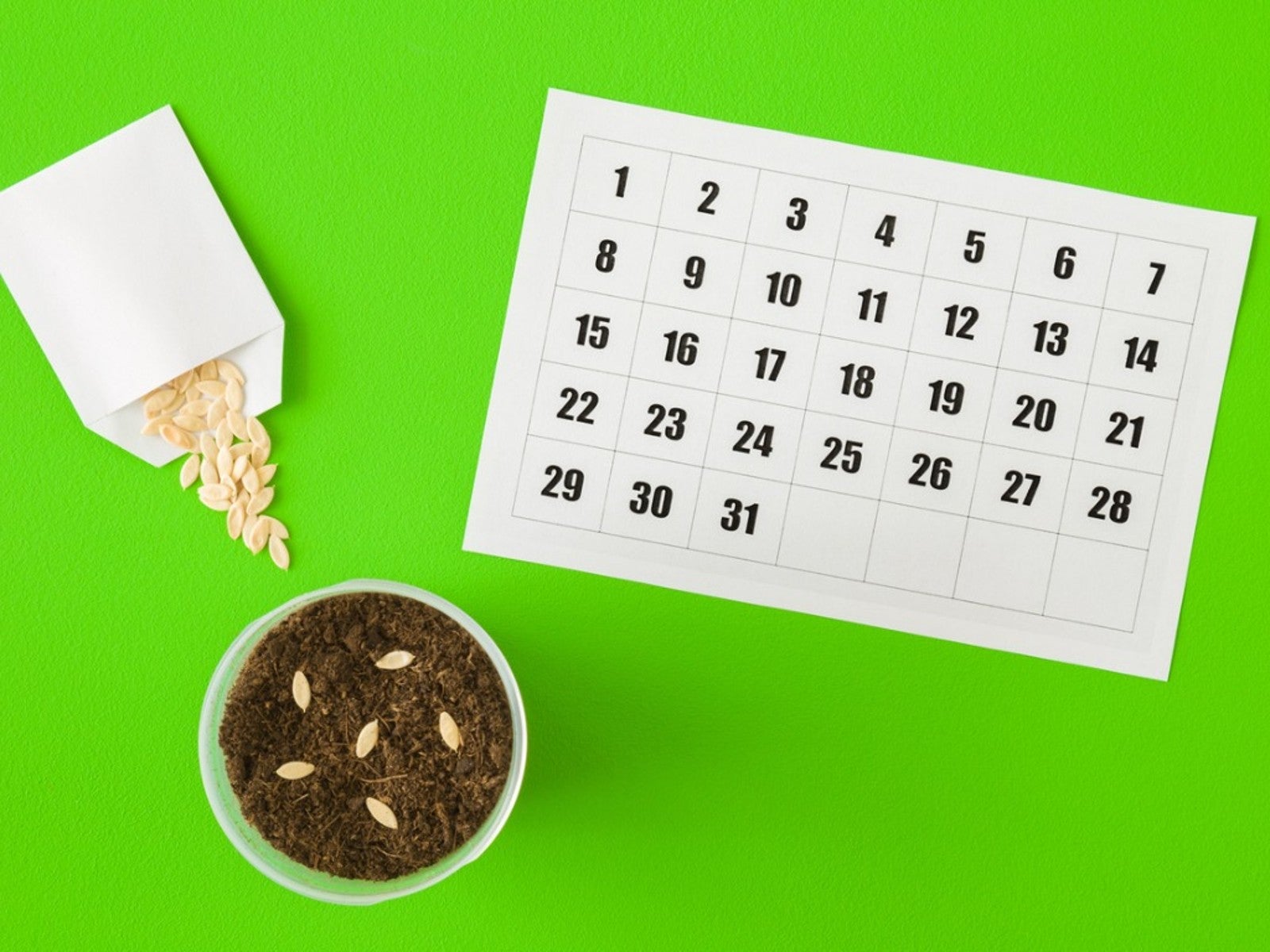Garden Planting Calendar: Figure Out When To Start Seeds Indoors


Starting seed at the right time gives plants enough time to mature and produce before the end of the growing season. It also enhances germination for direct sown plants. In northern regions especially, knowing when to start seeds indoors can help ensure that long season plants will produce. Making a seed starting chart puts that information at the grower’s finger tips for quick reference and a carefully planned garden.
When to Start Planting Seeds
A variety of factors influence when to start seeds. Your zone, the type of plant, the last day of frost, days until maturity, and more will inform the planting time. If you want to get a jump on the garden, it is also useful to understand when to start seeds indoors. Seed packets will give you some of this information, while online tools such as freeze maps can fill in the gaps. For a quick reference, a personalized garden planting calendar takes the guess work out of your particular zone and garden exposure. Nobody knows the landscape as well as the gardener who works it, and you will have experience with the micro-climates and special environmental issues of your own garden. Catalog all the seeds you want to grow and separate them into cool and warm season crops. Then it is time to develop a planting plan.
Making a Seed Starting Chart
Keeping a log of the past seasons will help determine weather patterns that are common to your area. The United States Department of Agriculture also publishes a zone map which will help determine your zone. But this is only part of the puzzle when identifying correct planting times for different plants. You need to know the date of your last freeze on average.
Extension offices are very efficient at publishing guides for individual locations. However, even a few miles away, the weather patterns can be very different. In this case, your log book will be helpful, as well as consulting with neighbors who have been around some time. This will still only be a guess, so be prepared to protect young plants if an unsuspected freeze occurs.
Making a Planting Calendar
Filling out a calendar can be a very visually simple way of scheduling all the planting times. Mark the last date for frost and then consult the seed packets. Count back from that date for cool season crops and forward for warm season plants such as tomatoes.
If you want to know when to start seeds indoors for transplant, the general rule is 6 weeks before they are transplanted outside. But some plants do best if direct sown. Plants like melon and cucumber actually do best if direct sown, but tender crops like cilantro and tomato benefit from being sown indoors first. Remember to harden off your seedlings prior to transplant to avoid shock and crop failure.
Sign up for the Gardening Know How newsletter today and receive a free copy of our e-book "How to Grow Delicious Tomatoes".

Bonnie Grant is a professional landscaper with a Certification in Urban Gardening. She has been gardening and writing for 15 years. A former professional chef, she has a passion for edible landscaping.